Lymphoma Genomics Lab
Group Leader : Bertoni Francesco, MD
Research areas of our group are the development of new drugs against lymphoma and lymphoma genomics. Accordingly, we apply genomics techniques followed by bioinformatic and functional studies to elucidate the lesions underlying lymphomas and to identify new genes and new potential therapeutic targets. Since the ultimate goal of our research is the improvement of patients outcome, to obtain new and active anti-lymphoma drugs we work in strict collaboration with academic groups and with pharmaceuticals companies. The strict connection with the Oncology Institute of Southern Switzerland (IOSI) running clinical trials dedicated to lymphoma patients and with Swiss Group for Clinical Cancer Research (SAKK) allows the development of new drugs from pre-clinical to clinical settings.
Members
Arribas Alberto, Senior Investigator
Bertoni Francesco, Group leader
Cannas Eleonora, Research Assistant
Cascione Luciano, Senior Investigator
Ghiringhelli Alessandro, Lab Technician
Giuffrida Stefano, Visiting Research Fellow
Guidetti Francesca, PhD Student
Mensah Afua Adjeiwaa, Senior Investigator
Munz Nicolas, PhD Student
Napoli Sara, Senior Investigator
Noce Beatrice, Visiting Research Fellow
Sartori Giulio, PostDoc
Scalise Camilla, Master Student
Spriano Filippo, PostDoc
Tarantelli Chiara, Senior Investigator
Zadro Alex, PhD Student
Zhang Fangwen, PhD Student
Current projects
- Mechanism of resistance to anti-lymphoma agents.
- Non-coding RNAs in B-cell lymphoma.
- Development of new anti-lymphoma compounds and identification of biomarkers.
- Development of a microfluidic platform for real-time detection of SARS-CoV-2 virus.
Relevant Publications
- Sartori G, Napoli S, Cascione L, Chung EYL, Priebe V, Arribas AJ, Mensah AA, Dall’Angelo M, Falzarano C, Barnabei L, Forcato M, Rinaldi A, Bicciato S, Thome M, Bertoni F. ASB2 is a direct target of FLI1 that sustains NF-kB pathway activation in germinal center-derived diffuse large B-cell lymphoma. J. Exp. Clin. Cancer Res. (2021) in press.
- Napoli S, Cascione L, Rinaldi A, Spriano F, Guidetti F, Zhang F, Cacciapuoti MT, Mensah AA, Sartori G, Munz N, Forcato M, Bicciato S, Chiappella A, Ghione P, Elemento O, Cerchietti L, Inghirami G and Bertoni F. Characterization of GECPAR, a noncoding RNA that regulates the transcriptional program of diffuse large B cell lymphoma. Haematologica (2021).
- Mensah AA, Spriano F, Sartori G, Priebe V, Cascione L, Gaudio E, Tarantelli C, Civanelli E, Aresu L, Rinaldi A, Damia G, Lovati E, Zucca E, Stathis A, Pietra C and Bertoni F. Study of the antilymphoma activity of pracinostat reveals different sensitivities of DLBCL cells to HDAC inhibitors. Blood Adv (2021) 5, 2467-2480.
- Spriano F, Gaudio E, Cascione L, Tarantelli C, Melle F, Motta G, Priebe V, Rinaldi A, Golino G, Mensah AA, Aresu L, Zucca E, Pileri S, Witcher M, Brown B, Wahlestedt C, Giles F, Stathis A and Bertoni F. Antitumor activity of the dual BET and CBP/EP300 inhibitor NEO2734. Blood Adv (2020) 4, 4124-4135.
- Tarantelli C, Lange M, Gaudio E, Cascione L, Spriano F, Kwee I, Arribas AJ, Rinaldi A, Jourdan T, Berthold M, Sturz A, Sperl C, Margheriti F, Scalise L, Gritti G, Rossi D, Stathis A, Liu N, Zucca E, Politz O and Bertoni F. Copanlisib synergizes with conventional and targeted agents including venetoclax in B- and T-cell lymphoma models. Blood Adv (2020) 4, 819-829.
- Spriano F, Chung EYL, Gaudio E, Tarantelli C, Cascione L, Napoli S, Jessen K, Carrassa L, Priebe V, Sartori G, Graham G, Selvanathan SP, Cavalli A, Rinaldi A, Kwee I, Testoni M, Genini D, Ye BH, Zucca E, Stathis A, Lannutti B, Toretsky JA and Bertoni F. The ETS Inhibitors YK-4-279 and TK-216 Are Novel Antilymphoma Agents. Clin Cancer Res (2019) 25, 5167-5176.
- Tarantelli C, Gaudio E, Arribas AJ, Kwee I, Hillmann P, Rinaldi A, Cascione L, Spriano F, Bernasconi E, Guidetti F, Carrassa L, Pittau RB, Beaufils F, Ritschard R, Rageot D, Sele A, Dossena B, Rossi FM, Zucchetto A, Taborelli M, Gattei V, Rossi D, Stathis A, Stussi G, Broggini M, Wymann MP, Wicki A, Zucca E, Cmiljanovic V, Fabbro D and Bertoni F. PQR309 Is a Novel Dual PI3K/mTOR Inhibitor with Preclinical Antitumor Activity in Lymphomas as a Single Agent and in Combination Therapy. Clin Cancer Res (2018) 24, 120-129.
- Arribas AJ, Rinaldi A, Mensah AA, Kwee I, Cascione L, Robles EF, Martinez-Climent JA, Oscier D, Arcaini L, Baldini L, Marasca R, Thieblemont C, Briere J, Forconi F, Zamo A, Bonifacio M, Mollejo M, Facchetti F, Dirnhofer S, Ponzoni M, Bhagat G, Piris MA, Gaidano G, Zucca E, Rossi D and Bertoni F. DNA methylation profiling identifies two splenic marginal zone lymphoma subgroups with different clinical and genetic features. Blood (2015) 125, 1922-1931.
- Boi M, Gaudio E, Bonetti P, Kwee I, Bernasconi E, Tarantelli C, Rinaldi A, Testoni M, Cascione L, Ponzoni M, Mensah AA, Stathis A, Stussi G, Riveiro ME, Herait P, Inghirami G, Cvitkovic E, Zucca E and Bertoni F. The BET Bromodomain Inhibitor OTX015 Affects Pathogenetic Pathways in Preclinical B-cell Tumor Models and Synergizes with Targeted Drugs. Clin Cancer Res (2015) 21, 1628-1638.
- Bonetti P, Testoni M, Scandurra M, Ponzoni M, Piva R, Mensah AA, Rinaldi A, Kwee I, Tibiletti MG, Iqbal J, Greiner TC, Chan WC, Gaidano G, Piris MA, Cavalli F, Zucca E, Inghirami G and Bertoni F. Deregulation of ETS1 and FLI1 contributes to the pathogenesis of diffuse large B-cell lymphoma. Blood (2013) 122, 2233-2241.
- Rinaldi A, Mian M, Chigrinova E, Arcaini L, Bhagat G, Novak U, Rancoita PM, De Campos CP, Forconi F, Gascoyne RD, Facchetti F, Ponzoni M, Govi S, Ferreri AJ, Mollejo M, Piris MA, Baldini L, Soulier J, Thieblemont C, Canzonieri V, Gattei V, Marasca R, Franceschetti S, Gaidano G, Tucci A, Uccella S, Tibiletti MG, Dirnhofer S, Tripodo C, Doglioni C, Dalla Favera R, Cavalli F, Zucca E, Kwee I and Bertoni F. Genome-wide DNA profiling of marginal zone lymphomas identifies subtype-specific lesions with an impact on the clinical outcome. Blood (2011) 117, 1595-1604.




